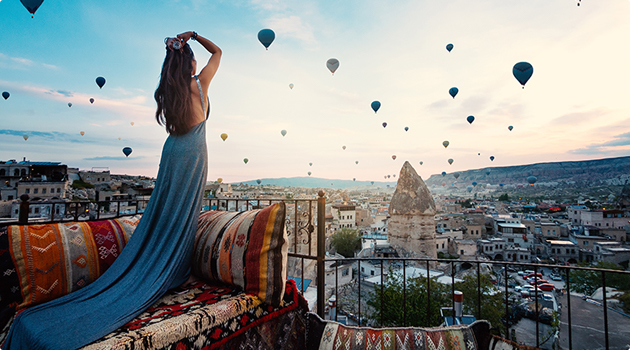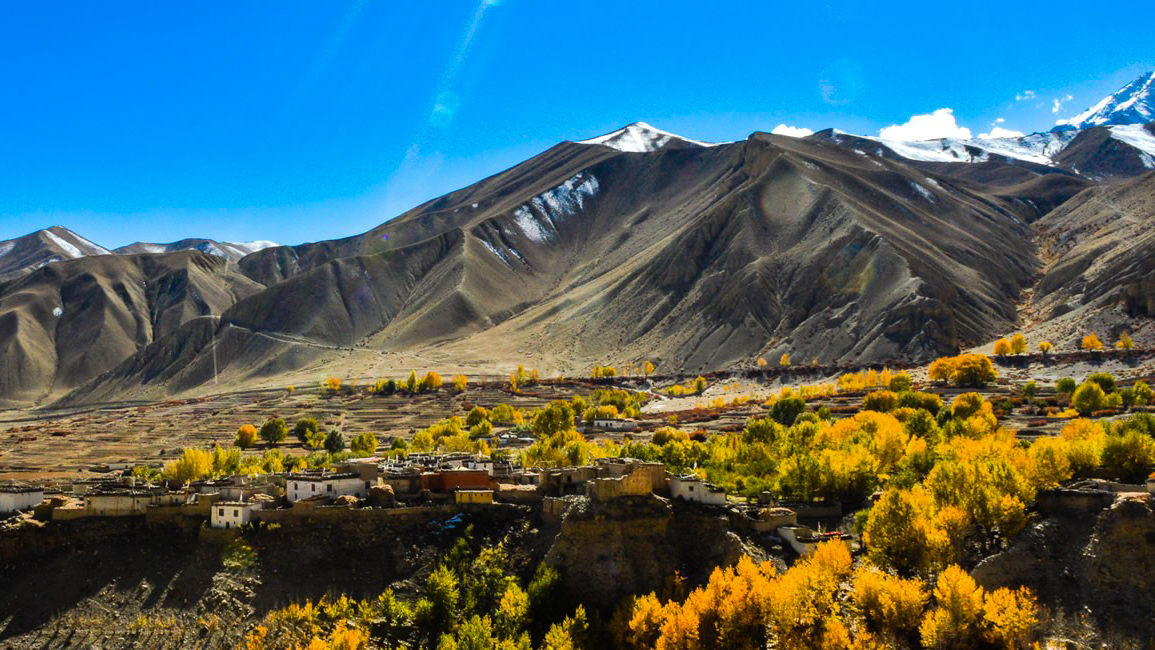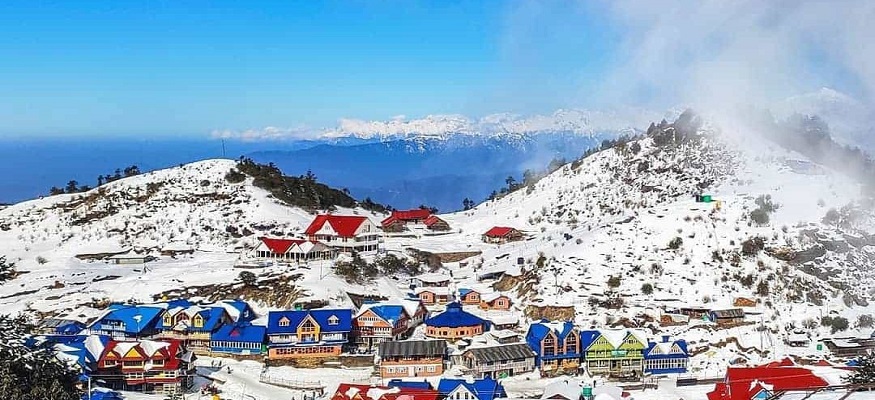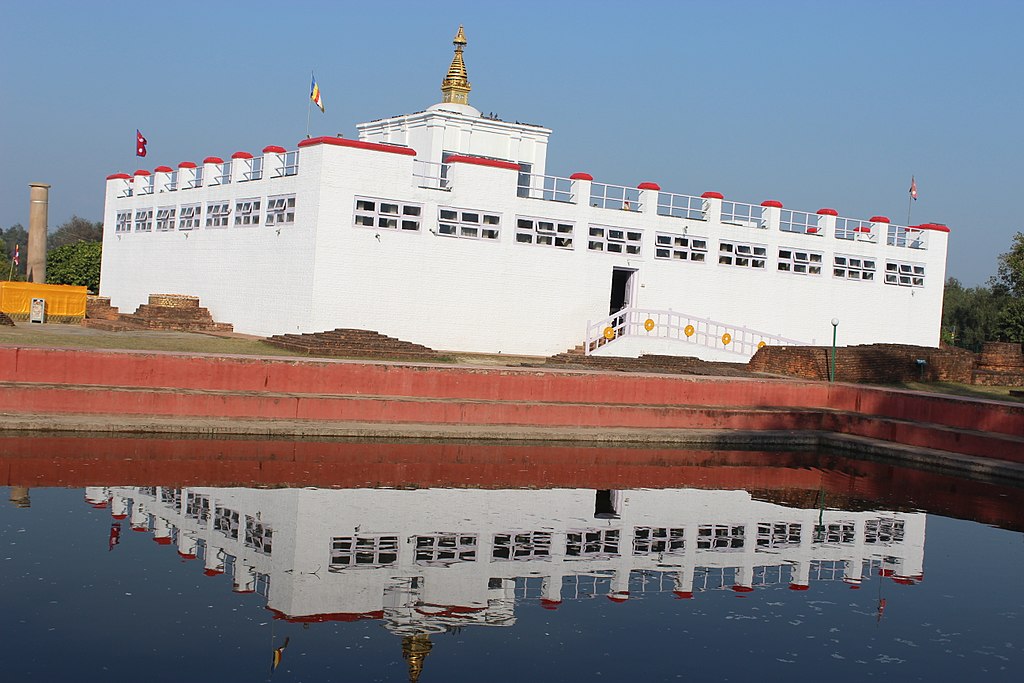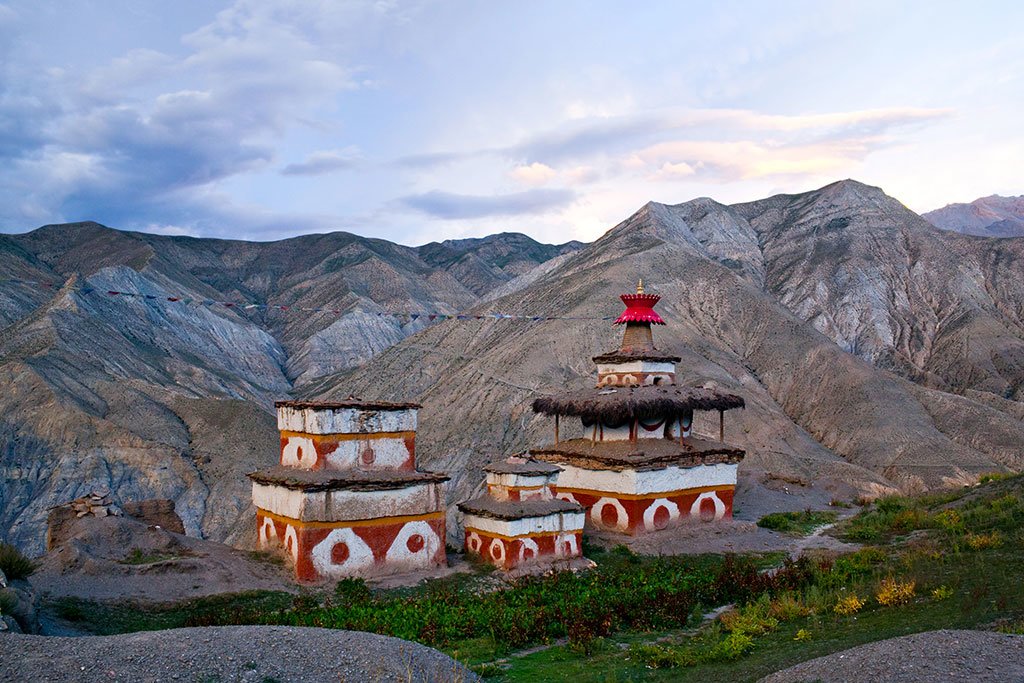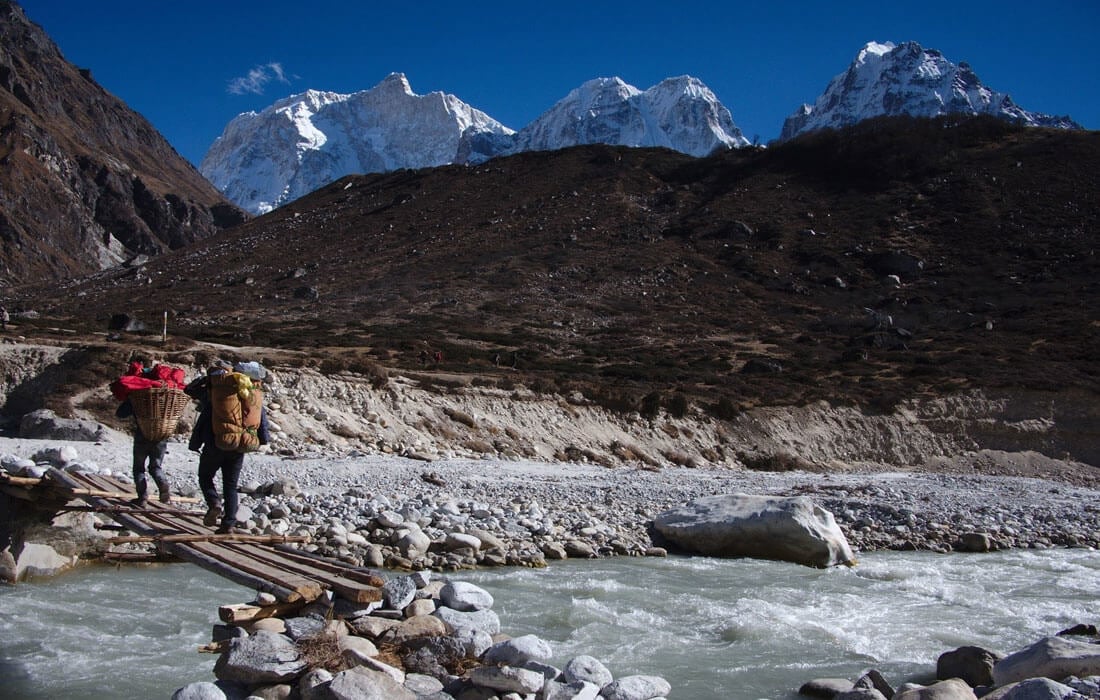 About this Trip
About this Trip
The Everest Gokyo Ri Trek represents the ultimate Khumbu region experience, offering a perfect synthesis of natural grandeur, cultural immersion, and physical challenge. What makes this journey extraordinary is its comprehensive nature—rather than choosing between the iconic landmarks of the standard Everest Base Camp route and the pristine beauty of the Gokyo Lakes, this circuit delivers both in a single, magnificent adventure.
The trek follows a counterclockwise loop from Lukla, first ascending through the main Khumbu Valley with its established teahouse infrastructure and vibrant Sherpa villages. The trail passes through Namche Bazaar, the bustling capital of Sherpa country, and continues to Tengboche Monastery, with its stunning backdrop of Ama Dablam, before reaching the high-altitude settlements of Dingboche and Lobuche. Each day brings new vistas and cultural insights, building anticipation for the arrival at Everest Base Camp itself—that legendary staging ground for summit attempts on the world's highest peak.
After visiting Base Camp and the spectacular viewpoint of Kala Patthar, the journey takes a dramatic turn, leaving the main trekking highway to cross the challenging Cho La pass. This high mountain traverse, occasionally requiring microspikes and careful footing on its glacier section, creates a physical and psychological transition between the two valleys. Descending from the pass, trekkers enter the relatively tranquil Gokyo Valley, dominated by the massive Ngozumpa Glacier and the series of sacred turquoise lakes that give the region its name.
The ascent of Gokyo Ri delivers what many experienced Himalayan trekkers consider the ultimate mountain panorama—a 360-degree vista spanning from Everest and Lhotse in the east to Cho Oyu on the Tibetan border, with the added magic of the turquoise Gokyo Lakes shimmering below. This viewpoint offers a different perspective on Everest than Kala Patthar, revealing the mountain in its full geographical context rather than in close-up detail.
Throughout the journey, the contrast between the relatively busy main Everest trail and the more peaceful Gokyo region offers trekkers a multi-faceted experience of the Khumbu. The circuit nature of the route means each day brings new terrain and vistas rather than retracing steps, creating a constant sense of discovery and forward progress that enhances the adventure.
Physically demanding but immensely rewarding, this trek requires proper acclimatization and preparation but delivers an experience that many consider the definitive Himalayan adventure—a perfect combination of iconic landmarks, cultural insights, and extraordinary natural beauty that creates memories to last a lifetime.
The Everest Gokyo Ri Trek represents the ultimate Khumbu region experience, offering a perfect synthesis of natural grandeur, cultural immersion, and physical challenge. What makes this journey extraordinary is its comprehensive nature—rather than choosing between the iconic landmarks of the standard Everest Base Camp route and the pristine beauty of the Gokyo Lakes, this circuit delivers both in a single, magnificent adventure.
The trek follows a counterclockwise loop from Lukla, first ascending through the main Khumbu Valley with its established teahouse infrastructure and vibrant Sherpa villages. The trail passes through Namche Bazaar, the bustling capital of Sherpa country, and continues to Tengboche Monastery, with its stunning backdrop of Ama Dablam, before reaching the high-altitude settlements of Dingboche and Lobuche. Each day brings new vistas and cultural insights, building anticipation for the arrival at Everest Base Camp itself—that legendary staging ground for summit attempts on the world's highest peak.
After visiting Base Camp and the spectacular viewpoint of Kala Patthar, the journey takes a dramatic turn, leaving the main trekking highway to cross the challenging Cho La pass. This high mountain traverse, occasionally requiring microspikes and careful footing on its glacier section, creates a physical and psychological transition between the two valleys. Descending from the pass, trekkers enter the relatively tranquil Gokyo Valley, dominated by the massive Ngozumpa Glacier and the series of sacred turquoise lakes that give the region its name.
The ascent of Gokyo Ri delivers what many experienced Himalayan trekkers consider the ultimate mountain panorama—a 360-degree vista spanning from Everest and Lhotse in the east to Cho Oyu on the Tibetan border, with the added magic of the turquoise Gokyo Lakes shimmering below. This viewpoint offers a different perspective on Everest than Kala Patthar, revealing the mountain in its full geographical context rather than in close-up detail.
Throughout the journey, the contrast between the relatively busy main Everest trail and the more peaceful Gokyo region offers trekkers a multi-faceted experience of the Khumbu. The circuit nature of the route means each day brings new terrain and vistas rather than retracing steps, creating a constant sense of discovery and forward progress that enhances the adventure.
Physically demanding but immensely rewarding, this trek requires proper acclimatization and preparation but delivers an experience that many consider the definitive Himalayan adventure—a perfect combination of iconic landmarks, cultural insights, and extraordinary natural beauty that creates memories to last a lifetime.

From $0
Price Varies from Group Size
Success
Here goes about why the success toast occurred.
 Itinerary
Itinerary
Arrival in Kathmandu (1,400m)
Kathmandu to Lukla (2,860m) to Phakding (2,610m)
Phakding to Namche Bazaar (3,440m)
Acclimatization Day in Namche Bazaar
Namche Bazaar to Tengboche (3,867m)
Tengboche to Dingboche (4,410m)
Acclimatization Day in Dingboche
Dingboche to Lobuche (4,940m)
Lobuche to Gorak Shep (5,170m) to Everest Base Camp (5,364m) and back to Gorak Shep
Gorak Shep to Kala Patthar (5,644m) to Dzongla (4,830m)
Dzongla to Cho La Pass (5,420m) to Thangnak (4,700m)
Thangnak to Gokyo (4,750m)
Gokyo Ri (5,357m) and Exploration Day
Gokyo to Dole (4,038m)
Dole to Namche Bazaar (3,440m)
Namche Bazaar to Lukla (2,860m)
Lukla to Kathmandu
Departure from Kathmandu
 Services
Services
Includes
- Specialized bilingual guide experienced in high pass crossings
- Private Transport where applicable
- Domestic flights between Kathmandu and Lukla
- Three daily meals on the trek: breakfast, lunch, and dinner
- Services of an experienced guide and porter during the trek
- All essential trekking permits, including Sagarmatha National Park and TIMS
- Accommodation throughout the trek (teahouses and lodges)
Excludes
- Additional accommodation due to flight delays or cancellations in Lukla
- Comprehensive travel and medical insurance for the trek
- Gratuities for the guides, porters, and trekking support staff
- International flights and entry visa fees for Nepal
- Personal trekking equipment and gear (sleeping bags, jackets, etc.)
- Extra food and drinks beyond the standard meals provided
- Emergency evacuation and helicopter rescue (should be covered by insurance)
- WiFi, charging, and hot shower fees at teahouses
 Good to Know
Good to Know
Train rigorously for 3-4 months before departure with focus on cardio, endurance, and uphill hiking; pack microspikes or mini-crampons for the Cho La pass crossing; acclimatize properly by strictly following the itinerary's rest days; carry altitude sickness medication after consulting your doctor; mentally prepare for basic facilities at higher elevations; build flexibility into your itinerary for possible weather delays at Cho La; and consider trekking in a counterclockwise direction (as described) to optimize acclimatization before attempting the high pass.
Wildlife Encounters
While trekking, keep an eye out for:
Himalayan tahr (wild mountain goats), Musk deer (in forested regions of lower elevations), Nepal's national bird, the colorful danphe (Himalayan monal), Blood pheasant, Snow cock (high-altitude game bird), Lammergeier (bearded vulture) with impressive wingspan, Himalayan griffon, Various alpine birds including choughs and snow pigeons, Pikas (small rabbit-like mammals), Occasionally, Himalayan black bears in lower forested regions, Snow leopard (extremely rare sightings)
 Reviews
Reviews
 FAQs (Frequently Asked Questions)
FAQs (Frequently Asked Questions)
How does this trek compare to the standard Everest Base Camp route?
This circuit is more challenging, longer (by 3-5 days), and more diverse than the standard EBC trek. It includes everything from the classic route plus the Cho La pass crossing, Gokyo Lakes, and Gokyo Ri. It offers two premier viewpoints (Kala Patthar and Gokyo Ri) rather than just one, and the circuit nature means you see new terrain throughout rather than retracing your steps. The Gokyo section is generally less crowded than the main EBC trail.
What is the best time of year for this trek?
Mid-October to late November offers the clearest mountain views with stable, dry weather. March to early May features spectacular rhododendron blooms at lower elevations, though occasional pre-monsoon haze can affect distant views. The Cho La pass is most safely crossed during these two primary seasons, as winter conditions (December-February) can make the pass dangerous or impassable, while monsoon conditions (June-September) bring rain, difficult trail conditions, and limited visibility.
What special gear do I need for the Cho La pass?
Depending on the season and conditions, you may need microspikes or mini-crampons for traction on icy sections of the pass. Trekking poles are highly recommended for stability. Gaiters can be useful if snow is present. A good quality down jacket, warm gloves, and proper layering are essential as temperatures at the pass can be well below freezing even during daytime. Your guide will advise on specific gear based on current conditions.
How fit do I need to be for this trek?
You should be able to hike comfortably for 6-8 hours daily on varying terrain with a light daypack for 16-18 consecutive days. Cardiovascular fitness is crucial for managing the limited oxygen at high altitudes. Regular training should include long uphill hikes with a pack, stair climbing, and endurance cardio exercise 3-4 times weekly for at least 3 months before departure. Previous experience trekking at altitudes above 4,000m is highly beneficial.
What are the accommodation options like?
Teahouses throughout the route offer basic but adequate accommodation. Facilities are best in Namche Bazaar, with relatively comfortable private rooms, hot showers (for an additional fee), and varied food options. As you ascend, particularly in Dzongla, Thangnak, and Gokyo, expect more basic conditions: unheated rooms, limited menu options, and shared bathroom facilities. During peak season, shared rooms might be necessary in some locations.
How do I prepare for high altitude?
Follow the itinerary's acclimatization days strictly in Namche Bazaar and Dingboche. Stay well-hydrated (3-4 liters daily), ascend slowly, and immediately report any altitude symptoms to your guide. Many trekkers and doctors recommend discussing Diamox (acetazolamide) with your physician before traveling as a preventative measure. Remember that physical fitness doesn't prevent altitude sickness, so proper acclimatization remains essential regardless of your fitness level.
What happens if weather prevents crossing Cho La?
Your guide will make safety-based decisions regarding the Cho La crossing. If conditions are unsafe, two alternatives exist: waiting in Dzongla for improved conditions (if your itinerary has flexibility) or returning via Pangboche to rejoin the standard Everest Base Camp route, missing the Gokyo section. This potential uncertainty is why building extra days into your total Nepal trip is advisable.
Is it possible to trek this route independently?
Experienced high-altitude trekkers can complete this route independently, as teahouses provide accommodation and food throughout. However, a local guide is strongly recommended for the Cho La pass crossing due to variable conditions and occasional route-finding challenges, particularly in poor visibility. Independent trekkers should carry a satellite communication device given the limited cell coverage throughout much of the route.
How reliable is the WiFi and phone connectivity?
Connectivity decreases as you ascend. Namche Bazaar has relatively reliable cell service and WiFi (for a fee of $3-5), but beyond this, connectivity becomes sporadic. Basic WiFi might be available in Dingboche and Gokyo for an additional cost ($5-8), but it's typically slow and unreliable. There is virtually no connectivity in Dzongla and Thangnak. For those requiring connectivity, satellite communication devices are recommended.
How much should I budget beyond the package cost?
Beyond the package cost, budget approximately $20-30 per day for additional expenses. This covers extra snacks, hot showers ($3-5), WiFi access ($3-8 per day), battery charging ($2-5 per device), and optional drinks. Prices increase with altitude, with costs in Gokyo and near Everest Base Camp approximately double those in Namche Bazaar. Also budget for potential extra nights in Lukla or Kathmandu due to weather-related flight delays.
